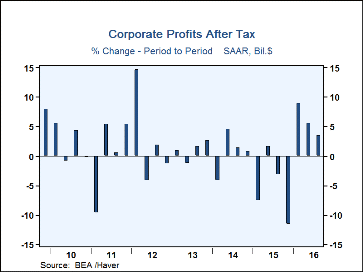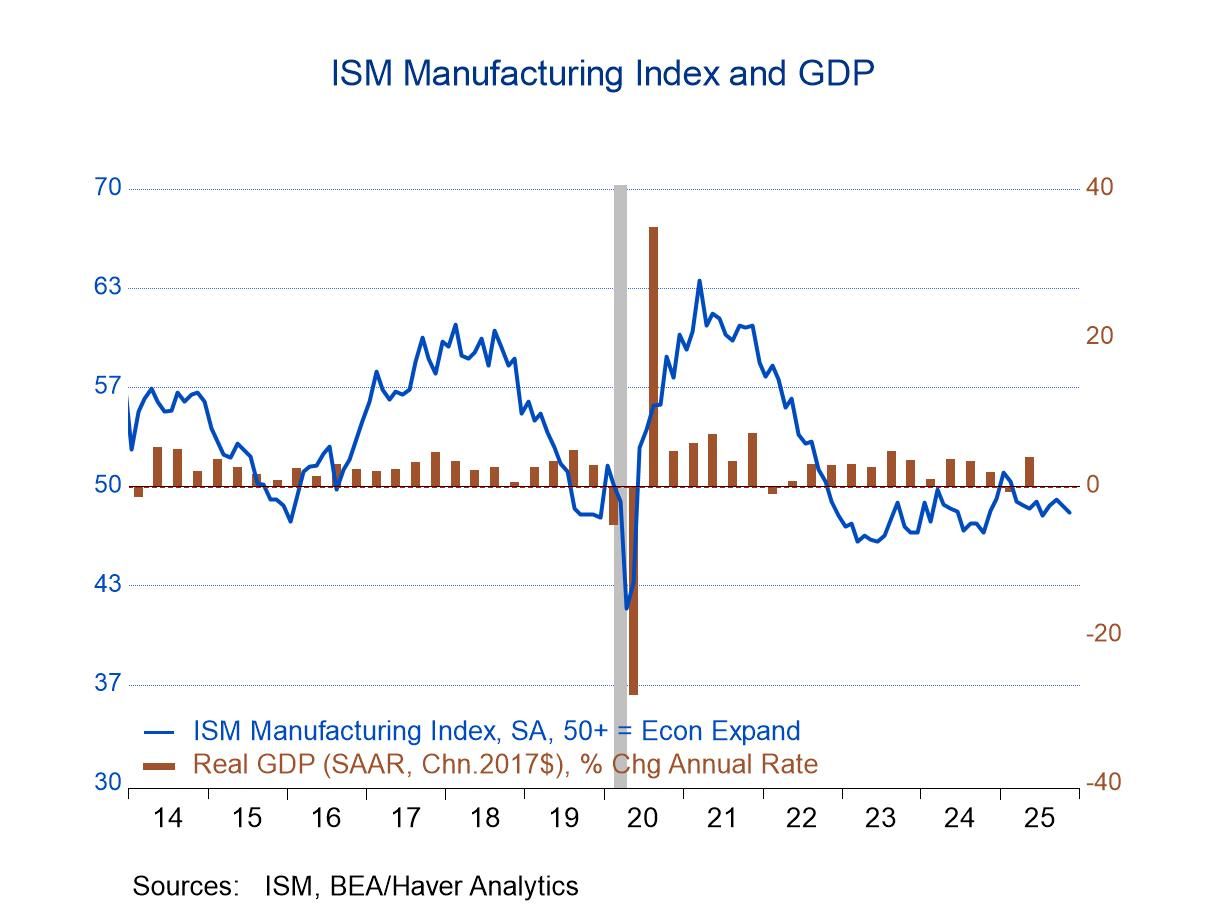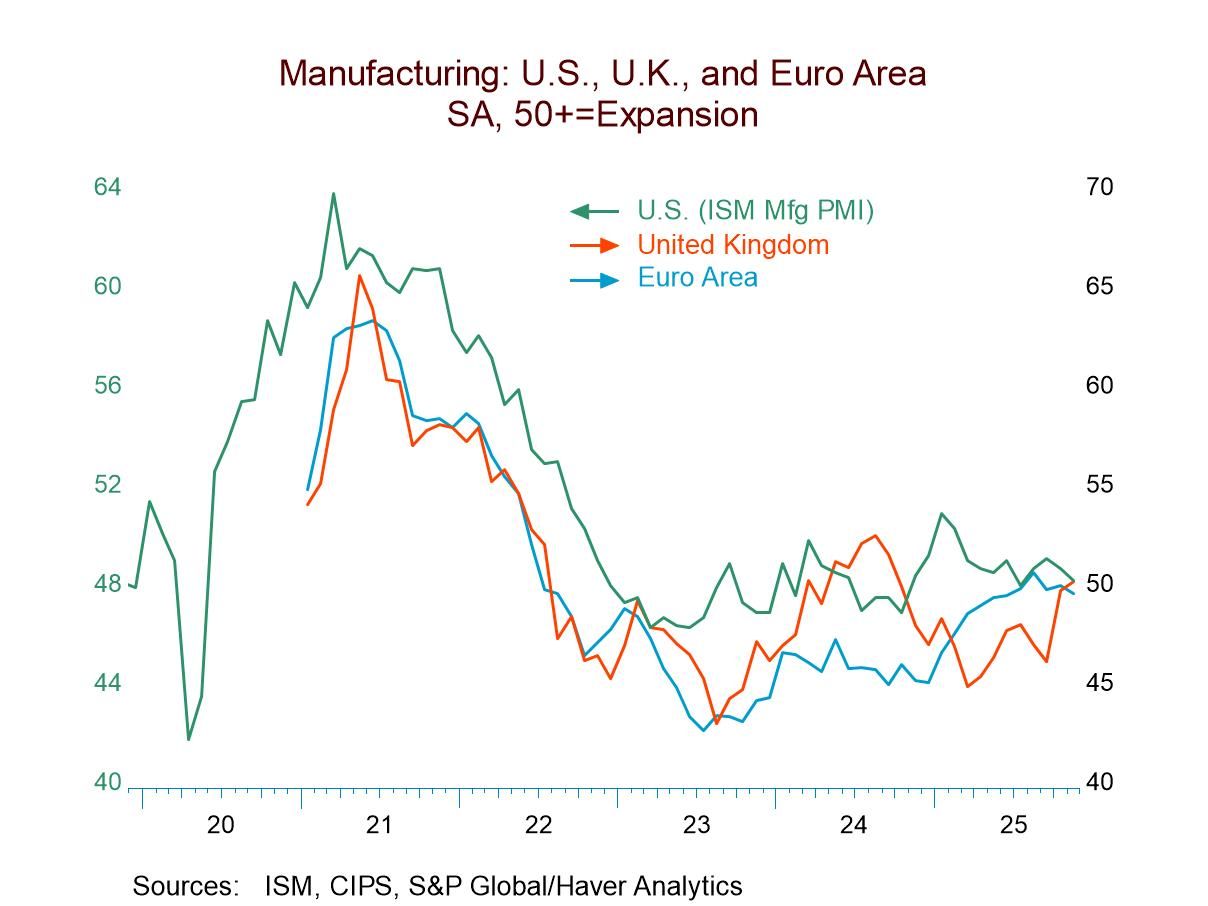 Global| Nov 29 2016
Global| Nov 29 2016U.S. GDP Growth Revised Higher; Corporate Profits Gain Moderates
by:Tom Moeller
|in:Economy in Brief
Summary
Economic growth was revised higher to 3.2% (1.6% y/y) during the third quarter, up from the advance estimate of a 2.9% gain. It was the strongest increase in two years, and exceeded the estimate of 3.0% growth in the Action Economics [...]
Economic growth was revised higher to 3.2% (1.6% y/y) during the third quarter, up from the advance estimate of a 2.9% gain. It was the strongest increase in two years, and exceeded the estimate of 3.0% growth in the Action Economics Forecast Survey.
After tax corporate profits without IVA and CCA increased 3.5% (5.2% y/y), the weakest gain in three quarters. Nevertheless, the 5.2% y/y rise was the first positive comparison since the end of 2014. Overall corporate profits with IVA & CCA increased 6.6% (2.8% y/y) after a 0.6% dip. The gain reflected a 10.7% y/y strengthening in financial industry earnings. Earnings from abroad increased 10.5% y/y, but nonfinancial sector profits fell 2.1% y/y.
The upward revision in GDP was led by 1.7% growth (1.7% y/y) in domestic final sales, revised from 1.4%. The 2.8% gain (2.7% y/y) in personal consumption expenditures was revised from 2.1% as spending on durable goods increased 11.6% (6.1% y/y), revised from 9.5%. Motor vehicle purchases grew 20.1% (4.2% y/y), up from 9.0% in the second quarter. Spending on recreational goods & vehicles advanced 9.5% (9.6% y/y) following a 14.5% gain. Home furnishings purchases increased 5.7% (6.4% y/y) following 9.3% Q2 growth. Spending on nondurable goods eased 0.6% (+2.1% y/y), revised from -1.4%, owing to a 3.3% reduction (+0.3% y/y) in gasoline & fuel oil buying. Clothing purchases also eased 0.8% (+1.0% y/y) after a 4.8% jump. Spending at restaurants gained 2.3% (3.1% y/y) after a 7.4% jump. Services buying increased a little-changed 2.5% (2.4% y/y) following a 3.0% gain. Recreation spending grew 3.2% (1.3% y/y), the first rise since Q4'15. Health care spending increased 2.3% (4.7% y/y), and housing & utilities spending improved 3.0% (1.6% y/y).
Business fixed investment edged up 0.1% (-1.4% y/y), revised from 1.1%. Structures investment surged 10.1% (-2.2% y/y), the third quarterly increase in two years. Equipment spending fell 4.7% (-5.0% y/y), the fifth quarterly decline in six quarters. A 17.6% drop (-10.7% y/y) in transportation equipment purchases led the way lower, along with a 3.0% fall (+3.1% y/y) in industrial equipment. purchases. Information equipment investment offset these declines with an 8.8% rise (0.4% y/y), the first increase this year.
Residential investment declined 4.4% (+1.5% y/y), revised from -6.2%, following a 7.8% decline.
Government spending improved 0.2% (0.3% y/y) after a 1.7% fall in Q2. Federal government investment increased 2.5% (1.1% y/y) as nondefense spending grew 3.0% (2.6% y/y). Defense spending improved 2.1%, but was little changed y/y. State & local government spending fell 1.1% (-0.2% y/y), down for the third quarter in the last four.
Improvement in the foreign trade deficit added 0.9 percentage points to economic growth last quarter, but little y/y. Exports jumped 10.1% (2.0% y/y), the strongest gain since Q4'13. Imports increased 2.1% (0.6% y/y) following stability during the prior six months. Strengthened inventory building contributed 0.5 percentage points to GDP growth following five straight quarters of subtraction..
The chain-type price index increased 1.4% (1.3% y/y) after a 2.3% Q2 rise. A 1.5% increase was expected. The PCE price index grew 1.4% (1.0% y/y), while excluding food & energy he index rose 1.7% (1.7% y/y). The business fixed investment price index improved 0.2% (0.4% y/y), held back by a 0.4% decline (+0.5% y/y) in the intellectual property products price index. The residential investment price index strengthened a steady 5.2% (3.8% y/y).
The GDP figures can be found in Haver's USECON and USNA database. USNA contains virtually all of the Bureau of Economic Analysis' detail in the national accounts, including the integrated economic accounts and the recently added GDP data for U.S. Territories. The Action Economics consensus estimates can be found in AS1REPNA
| Chained 2009 $ (%, AR) | Q3'16 (2nd Estimate) | Q3'16 (Advance Estimate) | Q2'16 | Q1'16 | Q3'16 Y/Y | 2015 | 2014 | 2013 |
|---|---|---|---|---|---|---|---|---|
| Gross Domestic Product | 3.2 | 2.9 | 1.4 | 0.8 | 1.6 | 2.6 | 2.4 | 1.7 |
| Inventory Effect | 0.5 | 0.6 | -1.2 | -0.5 | -0.3 | 0.2 | 0.0 | 0.2 |
| Final Sales | 2.7 | 2.3 | 2.6 | 1.3 | 1.9 | 2.4 | 2.5 | 1.5 |
| Foreign Trade Effect | 0.9 | 0.8 | 0.2 | 0.0 | 0.2 | -0.7 | -0.1 | 0.3 |
| Domestic Final Sales | 1.7 | 1.4 | 2.4 | 1.7 | 1.7 | 3.1 | 2.6 | 1.2 |
| Demand Components | ||||||||
| Personal Consumption Expenditures | 2.8 | 2.1 | 4.3 | 1.6 | 2.7 | 3.2 | 2.9 | 1.5 |
| Business Fixed Investment | 0.1 | 1.1 | 1.0 | -3.4 | -1.4 | 2.1 | 6.0 | 3.5 |
| Residential Investment | -4.4 | -6.2 | -7.8 | 7.8 | 1.5 | 11.7 | 3.5 | 11.9 |
| Government Spending | 0.2 | 0.5 | -1.7 | 1.6 | 0.3 | 1.8 | -0.9 | -2.9 |
| Chain-Type Price Index | ||||||||
| GDP | 1.4 | 1.5 | 2.3 | 0.5 | 1.3 | 1.1 | 1.8 | 1.6 |
| Personal Consumption Expenditures | 1.4 | 1.4 | 2.0 | 0.3 | 1.0 | 0.3 | 1.5 | 1.3 |
| Less Food/Energy | 1.7 | 1.7 | 1.8 | 2.1 | 1.7 | 1.4 | 1.6 | 1.5 |
Tom Moeller
AuthorMore in Author Profile »Prior to joining Haver Analytics in 2000, Mr. Moeller worked as the Economist at Chancellor Capital Management from 1985 to 1999. There, he developed comprehensive economic forecasts and interpreted economic data for equity and fixed income portfolio managers. Also at Chancellor, Mr. Moeller worked as an equity analyst and was responsible for researching and rating companies in the economically sensitive automobile and housing industries for investment in Chancellor’s equity portfolio. Prior to joining Chancellor, Mr. Moeller was an Economist at Citibank from 1979 to 1984. He also analyzed pricing behavior in the metals industry for the Council on Wage and Price Stability in Washington, D.C. In 1999, Mr. Moeller received the award for most accurate forecast from the Forecasters' Club of New York. From 1990 to 1992 he was President of the New York Association for Business Economists. Mr. Moeller earned an M.B.A. in Finance from Fordham University, where he graduated in 1987. He holds a Bachelor of Arts in Economics from George Washington University.












